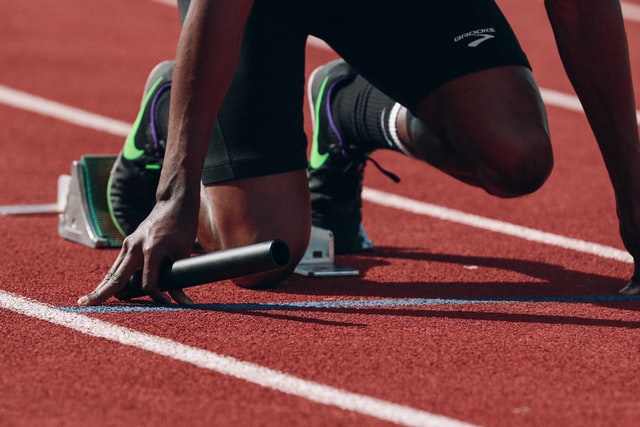
Today's modern running shoe makes it possible for anyone to just throw on a pair, pound the pavement and call themselves an athlete. But with stats like this:
70% of all the Australian runners will be injured in any given 12-month period
I believe that running is more a privilege than it is a right, and so you should have to earn a runner's license before clocking up the KM's. Especially if you have had any time off from running.
Update October 2023: Due to popular demand, we have created a running rebuild program. A 12-week progressive training plan aimed at helping runners build skill, endurance and strength to unlock extra fitness and speed on their runs. You can get the program at this link →
So here are our best tips and tricks to help you avoid becoming another statistic.
The thing with running effortlessly is you don't have to wear a barefoot, minimalist, or toe shoe to get a great result. Shoes like the Vivobarefoot, Vibram's etc, they are just tools to enable you to experience the environment and get a greater amount of sensory feedback. Today I will be running in bare feet, but these same rules apply no matter what shoe you wear.
The first tip is to learn how to use your Achilles properly as a spring. First, do some slow deliberate reps, bouncing on the ball of your foot, and feel how hard your muscles have to work to get off the ground. Then, do some light springy ones and feel the difference.
The reason that’s so much easy for us to bounce quickly as opposed to slowly is that Achilles tendon, basically works like a rubber band coiling up, absorbing and then giving us back kinetic and elastic energy from the ground. We call this difference soggy vs sprung, when running you want your foot and calf to work like a spring absorbing forces and propelling you into the next stride, this only really works when you run on your midfoot, though.
The Achilles tendon is quite a specific feature in humans, not many other animals have it. The elastic return from the ground (which is around 30% of it's stored eccentric energy) is one of the things that makes humans running machines.

Human's have evolved very specific features seperate from other primates that help us run and walk upright much more efficiently
When people start to run their first (incorrect) thought is trying to go faster. They immediately try to focus on the output of speed and start reaching out with longer and longer strides trying to cover more ground with fewer steps. The problem is that when reaching instead of pushing it leads to a heel strike, taking away that Achilles spring mechanism, overloading the anterior knee and switching off the glutes.

Instead of focusing on speed, think about it being light and being easy. Using that tendon as a spring, conserving energy and trying to be as effortless as possible. Good running should be silent smooth and _easy. _Focus on landing on the midfoot directly under the centre of mass with the foot sprung into dorsiflexion, aim to pick the foot back up off the ground as quickly as you can minimising ground contact time.
The next thing is to focus on your posture and thinking about being tall and long through your body. A hunched and cramped upper body makes it hard to breathe and it also tends to create a shuffley, poky style of running that is not conducive to effortless strides.
Imagine there is a string pulling the top of your head up and out away from your body. You also want to have a slight forward lean allowing you to fall into each stride.
Then the last thig to focus on is increasing your cadence of your legs and increasing your stride frequency. Instead of reaching out and lengthening out each stride, Try to take a more strides as a method for increasing speed while staying on your midfoot. Somewhere in the 140-180 mark, as far as strides per minute is a pretty good place to live. This list shows some songs to use as a motivational metronome
Running is a pretty complex motor skill and it’s pretty easy to stuff up if you do it wrong. But if you focus on these tips, being light and bouncy and effortless on your midfoot, using your tendons to store and release elastic energy, being tall instead of hunched up on your posture, and then focusing on a faster cadence, you won’t have to worry about speed because over time, it will simply take care of itself.
And then, once you have that speed up, it’s the best feeling in the world, running this way is a completely different thing to the old heel-strike running that you may or may not be used to.
A word of warning:
As with all the #shoesday videos, a word of warning, don’t jump straight into this new style of running. You want to ease your way and slowly introduce the new stimulus. It's going to be working muscles and tendons in ways that have never trained before.
If you have any problems, seek professional advice. Don’t push through pain or injury, seek some advice, get help and look after your body.
You can check out our 12-week progressive running program at this link. You can get the running program at this link →
